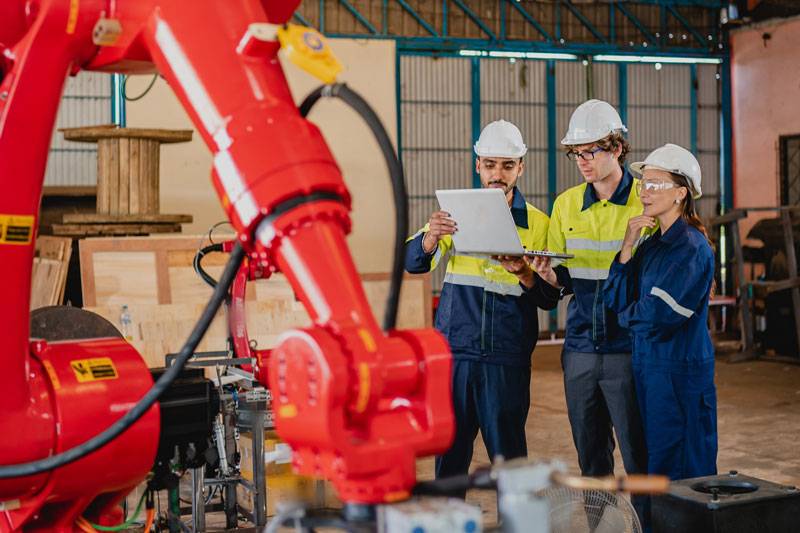Sustainability is no longer a trend; it’s an essential priority in almost every industry. As climate change concerns rise, businesses across sectors are adopting eco-friendly practices to lessen their carbon footprint and respond to consumer demand for greener products and services. The roofing industry is no exception to this shift. Often overlooked, roofs play a significant role in environmental sustainability, given their direct connection to energy efficiency, material use, and waste management.
The rise of new roofing technology, coupled with an increased focus on sustainable building materials and practices, means that the roofing industry is undergoing a transformative phase. In this article, we will explore the environmental impacts of the roofing industry, assess the growth of eco-friendly roofing solutions, and emphasize the importance of sustainability within the industry. We will also highlight how adopting greener roofing practices benefits not only the environment but also business longevity and customer satisfaction.
Environmental Side Effects of Traditional Roofing Practices
Before diving into sustainable alternatives, it’s crucial to understand the environmental impacts of traditional roofing methods. The materials used, their disposal, and the energy efficiency of the roof itself all contribute to the roofing industry’s environmental footprint.
Material Production and Resource Depletion
Most conventional roofing materials—such as asphalt shingles, wood shakes, and slate—are resource-intensive to produce. Asphalt shingles, which dominate the market due to their affordability and durability, are particularly problematic. Their production involves petroleum-based materials, contributing to greenhouse gas emissions and increasing the demand for non-renewable fossil fuels.
Beyond the production phase, the transportation of roofing materials adds to their environmental cost. Heavy roofing materials, like slate or clay tiles, require significant energy for transport, adding to the overall carbon footprint of the roofing industry.
Waste and Disposal Issues
One of the most pressing environmental challenges facing the roofing industry is the disposal of old roofing materials. Every year, millions of tons of roofing waste end up in landfills, with asphalt shingles being the primary culprit. According to research, asphalt shingles can take up to 400 years to decompose in a landfill, all while leeching harmful chemicals into the soil and groundwater. The result is long-term environmental harm that could be mitigated with better disposal practices.
However, many roofing companies still rely on traditional removal and disposal methods, which fail to consider the long-term environmental effects. While recycling options exist for certain roofing materials like metal and clay, these practices are not yet widespread or consistently applied.
Energy Efficiency and Climate Impact
The roofing industry also plays a significant role in building energy efficiency. A poorly insulated or constructed roof can cause buildings to lose heat in the winter and overheat in the summer, leading to increased energy consumption. This not only raises utility bills for homeowners but also places a strain on local energy grids, especially during peak seasons.
Roofs that absorb large amounts of heat, such as dark asphalt shingles, contribute to the urban heat island effect, which causes cities to be warmer than surrounding rural areas. The lack of energy efficiency in roofing materials exacerbates environmental problems by increasing greenhouse gas emissions from power plants that supply electricity for heating and cooling.
Growth of Eco-Friendly Roofing Materials and Technologies
As the roofing industry grapples with these environmental issues, there has been a noticeable shift towards more sustainable materials and technologies. Driven by consumer demand and the growing importance of corporate social responsibility, eco-friendly roofing solutions are becoming increasingly popular.
Cool Roofs: Reducing Energy Consumption
One of the most promising innovations in the roofing industry is the development of cool roofs. These roofs are designed to reflect more sunlight and absorb less heat than standard roofing materials. The result is a lower roof temperature and a reduced need for air conditioning, which in turn reduces energy consumption.
Cool roofs are typically made from highly reflective materials like white thermoplastic membranes, cool-colored coatings, or metal roofing systems. By lowering the temperature inside a building, cool roofs help reduce energy use, which leads to lower carbon emissions. This is particularly beneficial in urban areas, where cool roofs can mitigate the urban heat island effect, contributing to cooler cities overall.
Green Roofs: A Living System for a Healthier Environment
Green roofs are another innovative solution gaining traction in the roofing industry. Unlike traditional roofs, green roofs incorporate vegetation planted on top of a building. These living systems offer multiple environmental benefits, including improved air quality, stormwater management, and enhanced insulation.
Green roofs can help reduce a building’s energy consumption by providing an additional layer of insulation, keeping buildings cooler in the summer and warmer in the winter. This natural insulation reduces the need for heating and cooling, contributing to a building’s overall energy efficiency. Additionally, green roofs can capture stormwater runoff, reducing the strain on municipal sewer systems and helping to prevent flooding.
Beyond energy and water benefits, green roofs also improve air quality by filtering pollutants and producing oxygen. In densely populated urban areas, they provide much-needed green space, supporting biodiversity and contributing to a healthier environment.
Solar Roofing: Harnessing the Power of the Sun
One of the most well-known eco-friendly roofing solutions is the integration of solar panels into roofing systems. Solar energy is a clean, renewable resource that significantly reduces reliance on fossil fuels. When installed on rooftops, solar panels can convert sunlight into electricity, providing homeowners and businesses with a sustainable source of power.
Advances in solar roofing technology have made solar panels more efficient and aesthetically pleasing, with products like solar shingles gaining popularity. These shingles function as both a roof covering and a solar energy generator, offering a seamless way to incorporate renewable energy into the structure of a building. For businesses looking to lower their carbon footprint, solar roofing is a forward-thinking solution that offers both environmental and financial benefits.
Sustainable Practices in Roofing Installation and Maintenance
In addition to using eco-friendly materials, the roofing industry can reduce its environmental impact through sustainable installation and maintenance practices.
Recycling and Reusing Roofing Materials
Recycling plays a key role in minimizing the waste generated by roofing projects. While materials like metal and clay are already recyclable, new methods are being developed to recycle asphalt shingles as well. Recycled asphalt shingles can be used in road construction or other roofing projects, reducing the demand for virgin materials and keeping shingles out of landfills.
The roofing industry is also seeing an increase in material reuse practices. Instead of immediately discarding old roofing materials, contractors are finding ways to repair and refurbish them for extended use. This reduces the need for new materials and cuts down on waste, making the roofing process more environmentally sustainable.
Energy-Efficient Installation Techniques
The way a roof is installed can also affect its environmental impact. Proper insulation, ventilation, and the use of energy-efficient underlayment materials can enhance a roof’s performance and reduce energy consumption. For example, installing a reflective underlayment beneath the roof covering can improve the building’s overall energy efficiency by reflecting heat away from the building.
Additionally, ensuring proper ventilation during installation helps regulate the temperature inside the roof cavity, preventing excessive heat buildup in the summer and reducing the need for air conditioning. These energy-efficient techniques not only benefit the environment but also provide long-term cost savings for homeowners.
The Business Case for Sustainability in Roofing
As more businesses prioritize sustainability, it’s clear that adopting eco-friendly roofing practices is not just about protecting the environment—it’s also about building a successful, future-proof business. Consumers are increasingly conscious of the environmental impact of the products and services they purchase. According to research, 78% of consumers believe sustainability is important, and 84% feel alienated from brands with poor environmental practices.
For roofing companies, embracing sustainability can be a competitive advantage. By offering eco-friendly roofing materials and energy-efficient installation services, businesses can attract environmentally conscious customers who are willing to pay a premium for sustainable solutions. Additionally, companies that prioritize sustainability can differentiate themselves in the market, positioning their brand as a leader in green building practices.
Investing in sustainability also brings long-term financial benefits. Energy-efficient roofs can lower operating costs for homeowners and businesses by reducing energy consumption. This makes eco-friendly roofing systems an attractive investment for customers, providing roofing companies with a unique selling point. Furthermore, sustainable roofing practices can reduce operational costs for roofing companies by minimizing waste, conserving resources, and reducing the need for frequent repairs or replacements.
Conclusion: The Path to a Greener Roofing Industry
The roofing industry has a significant impact on the environment, from the production and disposal of materials to the energy efficiency of buildings. However, as sustainability becomes a priority for businesses and consumers alike, the industry is evolving. Eco-friendly roofing materials like cool roofs, green roofs, and solar panels are transforming the way roofs are designed and installed, offering tangible environmental benefits.
For roofing companies, adopting sustainable practices is not only an ethical choice but also a smart business decision. As consumers become more environmentally conscious, businesses that embrace sustainability will be better positioned to thrive in the future. By investing in sustainable roofing materials and energy-efficient installation techniques, companies can reduce their carbon footprint, attract eco-conscious customers, and build a more resilient business model.
In conclusion, the roofing industry’s impact on the environment is significant, but with the right materials and practices, it can become a powerful force for positive change. As green roofing solutions continue to grow in popularity, the industry has the opportunity to play a key role in the fight against climate change, creating a healthier planet for future generations.
Sign up for a free 14-day trial with Wello Solutions and discover how our roofing software can help you build a lasting, successful business.











